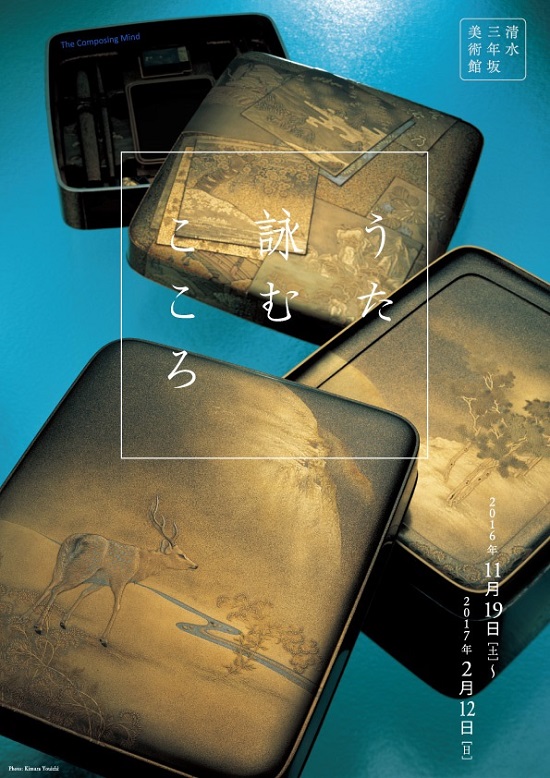
The Composing Mind
In Japan, whose ancient native poetic tradition deemed it “the land where the power inhering in words brings forth good fortune,” poems were words interwoven with prayer, and by reflecting the workings of all creation as well as the subtleties of the human mind, they inspired, comforted, and moved their readers. This spirit greatly influenced the formation of the Japanese culture, providing extensive material not only for the language arts but also for painting and the decoration of personal implements, sword fittings, and the like. And this deep connection gave birth to the development of what is known as the “Ashide” technique, whereby an overall theme is suggested through the decorative incorporation of the words and phrases of classical poetry into the background design of shikishi, ceremonial squares of thickened paper that possess an intimate relation to the world of classical poetry, as well as the maki-e adornment of poetry writing tables or inkstone cases. The scene depicted in maki-e and metalworking art at times is fantastic and gives expression to an imagined world that transcends that of the traditional poetry.
For the present exhibition, we have matched works in the permanent collection based on, or whose design can give rise to, associations with the classical poetry of the ancients together with the poetry, whether Chinese or Japanese in various forms, to which they are connected. We invite you to peruse the rich world of beauty created by the sublime art of the craftsmen of the Late Edo and Early Meiji period.
 2025-12-31 / 2016-11-19
2025-12-31 / 2016-11-19